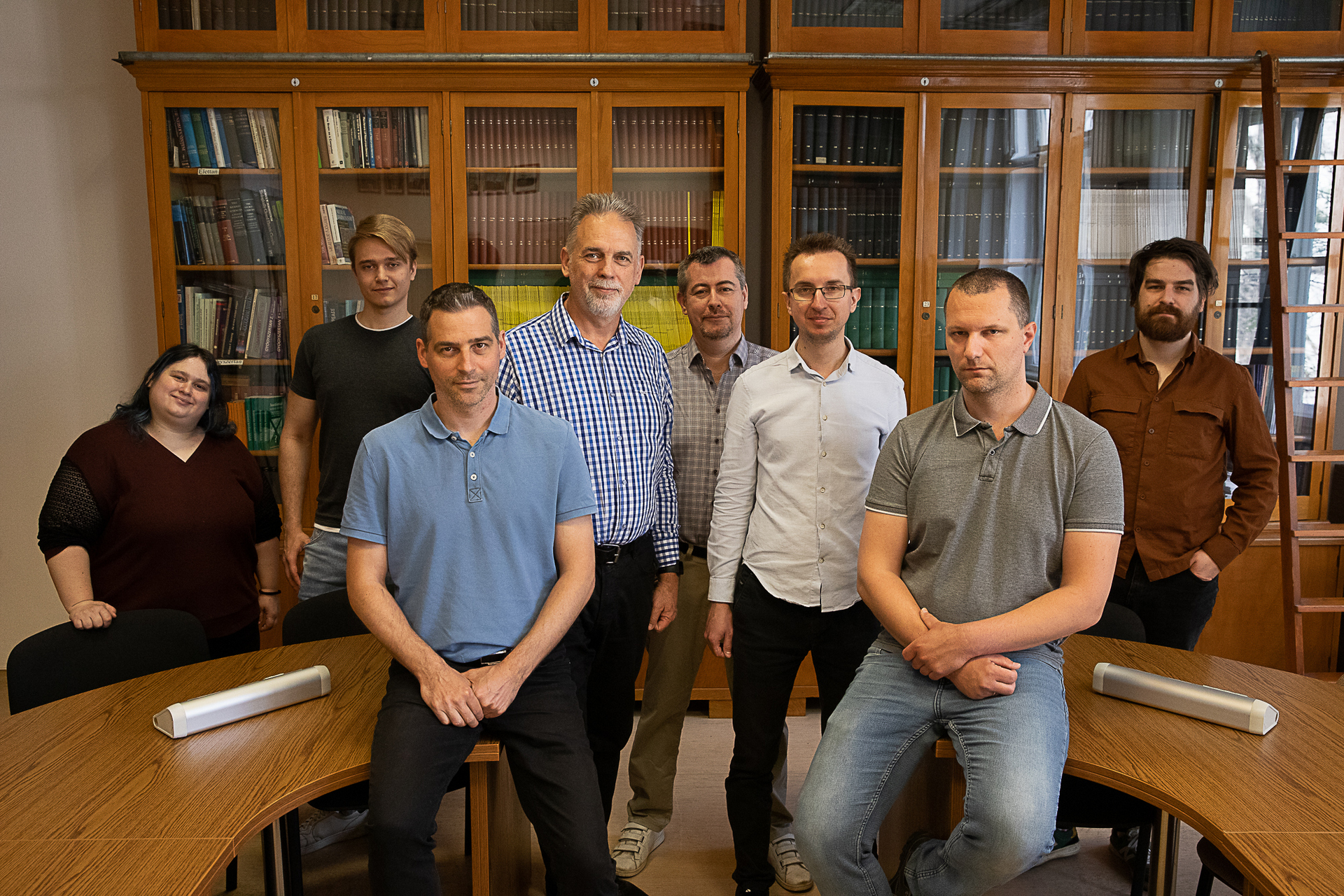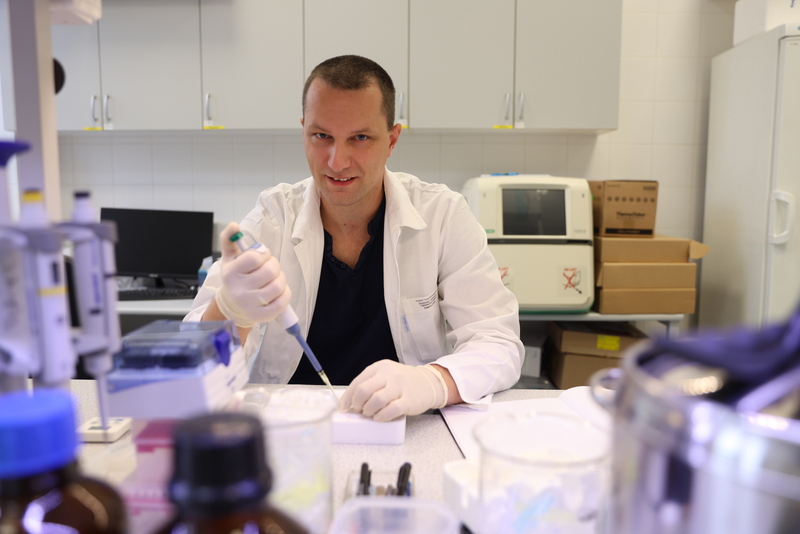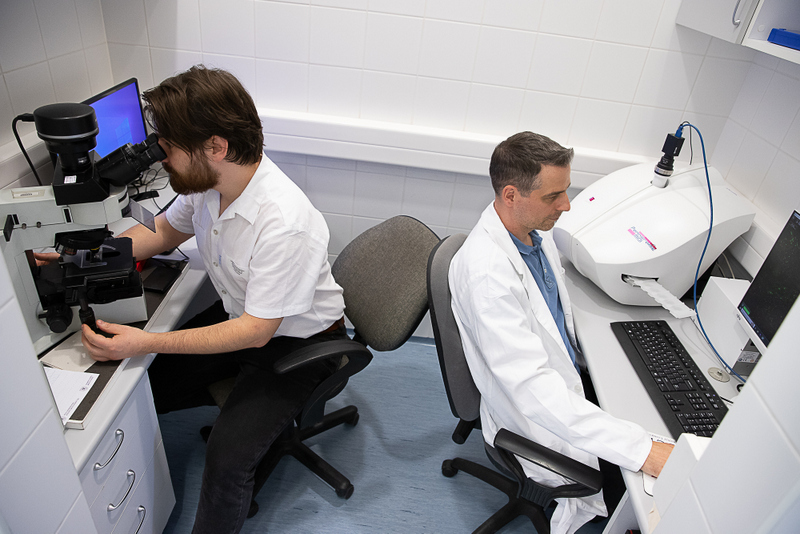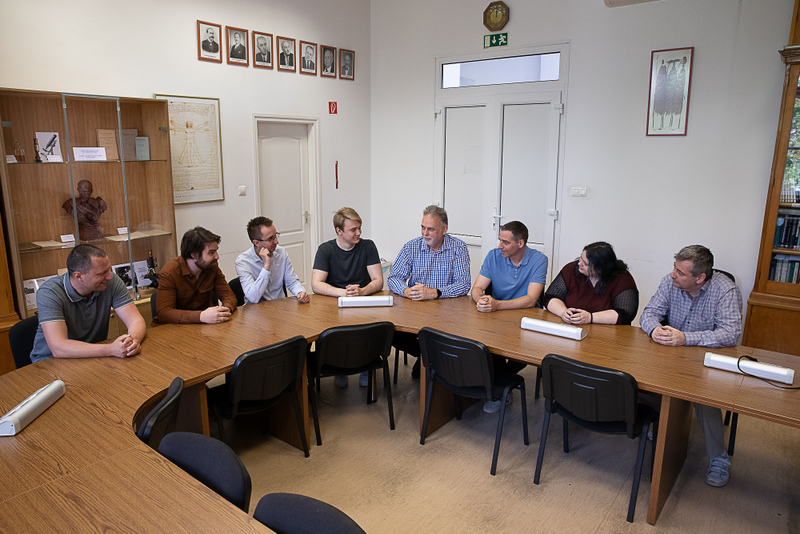
The possible areas of use of mRNA technology are wide-ranging: within a few years, it may even provide a therapeutic strategy that can be used in the case of cancer, cardiovascular, or autoimmune diseases. Several mRNA-based research projects are taking place at the University of Szeged with the support of Katalin Karikó, the first female Hungarian Nobel laureate. Among these, we present the research work carried out in the Laboratory of Neural Regeneration of SZTE SZAOK Department of Anatomy, Histology, and Embryology. The work of the researchers here can form the basis for treating spinal cord injury with mRNA therapy.
– After a spinal cord injury, an inflammatory process starts, as a result of which the healthy cells in the vicinity of the injury also die. The time factor is very important, because by the time the patient's diagnosis is made and he receives care, his condition may continue to deteriorate. We are looking for a solution to stop this negative process, reduce inflammation, and prevent further damage - Zoltán Fekécs told us. The assistant professor of the SZTE SZAOK Department of Anatomy, Histology, and Embryology said that the main profile of the Laboratory of Neural Regeneration led by Prof. Dr. Antal Nógrádi is the examination of therapeutic options related to spinal cord injury. They have been experimenting with stem cells for years – after transplanting them into rats, they examined the effects of the stem cells and found out what anti-inflammatory proteins they produce. The processing and analysis of samples is an established process in the laboratory. Recently, a new method, mRNA technology, was used to produce anti-inflammatory proteins within the injured spinal cord.

Zoltán Fekécs at the laboratory
The previous results were published in a scientific article in 2023: it focused on the therapeutic protein IL-10, an anti-inflammatory cytokine, which was injected into the spinal cord during an invasive procedure. With this, a successful functional and morphological improvement was achieved. The essence of the new procedure, based on previous experiences, is that the mRNA delivered to the spinal cord is taken up by the cells around the injury, and they themselves produce the protein necessary for regeneration.

Dénes Török and Dr. Krisztián Pajer
– During the research, we also examined alternative ideas. We set out to find a way to deliver mRNA to the injured spinal cord in a less invasive way, without reopening the injured area. The obvious solution to this seemed to be that we should first introduce the mRNA into so-called "cargo" cells (carrying cells), and then, according to our assumption, these cells would migrate to the damaged spinal cord section through the gaps left in the small blood vessels after the injury. By the time the cargo cells arrive in the spinal cord and settle there, transcription of the protein from the imported mRNA begins. This less invasive way to reduce inflammation can offer a greater chance for regeneration and functional recovery.

Prof. Dr. Antal Nógrádi holds a meeting with the research group
– Based on the results so far, we can say that a much larger number of cargo cells enter the spinal cord than we thought initially, and for the time being, they only deliver one test protein, GFP (so-called green fluorescent protein) that glows green under the microscope, to the site of the injury, which can allow us to develop a therapeutic route. In the future, we will also examine the effect of the protein produced in this way on the surrounding organs. However, the long-term goal is to perfect the procedure to such a level that it only reaches where it needs to be, i.e. the place of the injury – explained Dr. Krisztián Pajer, assistant professor.
The challenge and at the same time the beauty of the work process is that this field has had no literature so far, so the scientists of the University of Szeged are pioneers in this regard.
The research is interdisciplinary: the researchers of the Laboratory of Neural Regeneration work together with Miklós Erdélyi, director of the Institute of Genetics at the Szeged Biological Research Center, with immunologists Zsolt Czimmerer and Csaba Vizler (BRC), and with Dr. Norbert Pardi from the University of Pennsylvania.
Text and photos: Anna Bobkó

